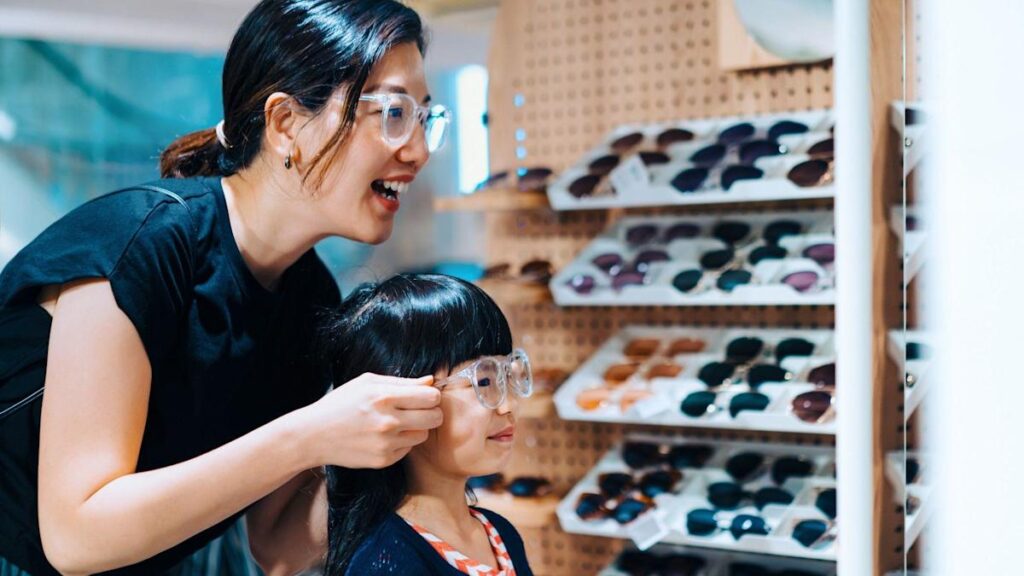
In a groundbreaking development, Finnish eyewear firm IXI has unveiled its latest innovation: autofocus glasses that promise to deliver sharp vision both near and far. These seemingly ordinary spectacles are packed with cutting-edge technology, offering a glimpse into the future of vision correction.
Niko Eiden, the chief executive and co-founder of IXI, showcased the glasses during a recent Zoom call. The frames contain lenses with liquid crystals, which can change their vision-correcting properties on the fly. “People don’t want to look like cyborgs,” Eiden remarked, emphasizing the importance of consumer acceptability.
Revolutionizing Eyewear with Liquid Crystals
The key to IXI’s innovation lies in the liquid crystals embedded within the lenses. “These liquid crystals… we can rotate them with an electrical field,” Eiden explained. The position of these crystals affects how light passes through the lenses, allowing the glasses to adjust to the wearer’s needs in real-time. A built-in eye tracker enables the glasses to respond to whatever correction is required at any given moment.
However, the history of tech-laden eyewear has been fraught with challenges, as seen with Google’s ill-fated “Glass” smart glasses. Eiden acknowledges the importance of making their products resemble traditional eyewear to ensure consumer acceptance.
Addressing Common Vision Problems
The market for eyewear technology is poised for growth, driven by the increasing prevalence of presbyopia and myopia. Presbyopia, an age-related condition that makes it difficult to focus on nearby objects, is becoming more common as the global population ages. Meanwhile, myopia, or short-sightedness, is also on the rise.
Traditional spectacles, such as bifocals and varifocals, have remained largely unchanged for decades. These lenses require the wearer to adjust their vision through different regions of the lens to see clearly. In contrast, autofocus lenses offer a seamless experience, adjusting spontaneously to accommodate the wearer’s changing eyesight.
Challenges and Innovations in Autofocus Technology
Developing autofocus lenses has not been without its challenges. “The first lenses that we produced were horrible,” Eiden candidly admitted. Early prototypes were “hazy” with poor lens quality at the edges. However, newer versions have shown promise in tests, with participants reporting smooth transitions between reading and viewing distant objects.
Emilia Helin, IXI’s product director, highlights the importance of a good fit for the glasses to function effectively. While the frames are adjustable, the delicate electronics inside limit the degree of flexibility. IXI aims to design a small range of frames that suit a wide variety of faces.
The glasses are powered by a small battery that lasts for two days and can be recharged overnight. While Eiden remains tight-lipped about the launch date and pricing, he hints that the cost could be around £1,000.
Expert Opinions and Future Prospects
Autofocus lenses could be a game-changer for those struggling with varifocals or bifocals, according to Paramdeep Bilkhu, a clinical adviser at the College of Optometrists. However, he cautions that there is insufficient evidence to determine their performance for safety-critical tasks like driving.
Chi-Ho To, an optometry researcher at the Hong Kong Polytechnic University, shares similar concerns. He questions the reliability of autofocus technology in situations requiring precise vision correction, such as surgery. Nonetheless, he acknowledges the potential benefits for general use.
IXI’s current lenses do not alter the entire lens area, allowing wearers to glance over the dynamic region. Eiden notes that fully self-adjusting lenses would raise safety considerations to a “much more serious business.”
In 2013, UK firm Adlens introduced glasses with manually adjustable lenses, selling for $1,250 (£920) in the US. Despite initial consumer interest, sales were hindered by opticians’ reluctance.
Adlens, like IXI, is now working on glasses that refocus automatically without manual intervention. However, the company has not announced a launch date.
Broader Implications and Future Innovations
Joshua Silver, an Oxford University physicist and founder of Adlens, pioneered fluid-filled adjustable lenses in 1985. His work has enabled approximately 100,000 people in 20 countries to access vision-correcting technology. Silver is currently seeking investment for a new venture, Vision, to further expand these glasses.
While autofocus glasses hold promise, Silver questions their broad appeal, suggesting that many might prefer traditional reading glasses for simplicity.
Meanwhile, other technological advancements in eyewear are addressing the progression of eye conditions like myopia. Prof. To has developed lenses with a honeycomb-like ring that slows improper eyeball growth in children, reducing short-sightedness progression by 60%. This technology is now in use in over 30 countries.
British firm SightGlass offers a different approach, using glasses that gently reduce vision contrast to affect eye growth and myopia progression.
Looking ahead, Prof. To envisions glasses that not only slow myopia but potentially reverse it, a tantalizing prospect that could improve vision for billions worldwide. “There is growing evidence that you can do it,” he teases.






